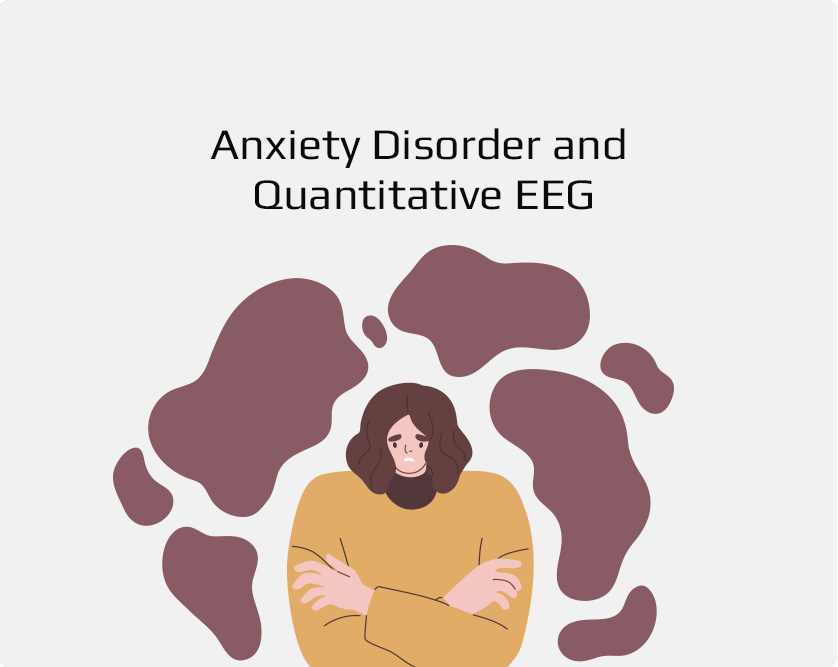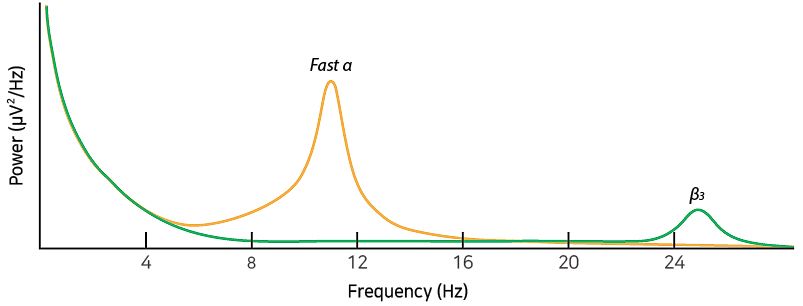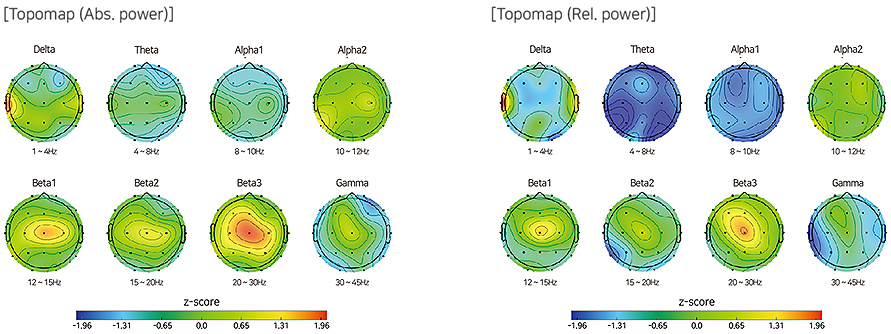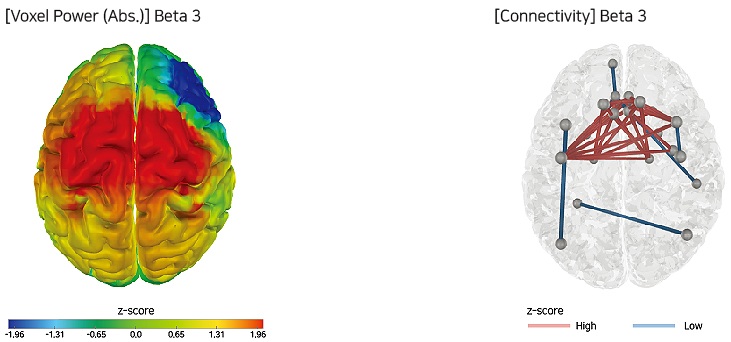
ANXIETY and QEEG
Anxiety disorder is a mental disorder that causes disturbances in daily life due to various types of abnormal and
pathological anxiety and fear. Diseases corresponding to anxiety disorders include panic disorder, agoraphobia,
generalized anxiety disorder(GAD), social anxiety disorder(SAD), specific phobia, separation anxiety disorder,
etc.
It is known that anxiety disorder is related to neurotransmitters such as GABA, serotonin, noradrenaline, and an
excessive glutamate, and a deficient dopamine. These imbalances have different effects on the brain function
activity, and it is reflected in changes in EEG. According to previous studies, an anxiety disorder can be classified
into two types and the ‘Fast-waves increase’ phenomenon is commonly observed.

First pattern, an excessive beta 3 wave in the central lobe
Second pattern, an alpha wave speeding
This can be interpreted as being observed due to an imbalance of neurotransmitters.
Measuring QEEG in advance for anxiety disorder can increase the treatment success rate, by determining what
pattern that QEEG has and prescribing individualized drugs with a mechanism in accordance with their
corresponding QEEG.
CASE REVIEW
Participant information
– Age : 50 / Female / Diagnosed with anxiety disorder
– Always nervous and anxious, and if she goes to a crowded place, she has dyspnea which seems to stop breathing.
Cannot sleep easily even though she is tired.
| Band Power – Topomap

Compared to healthy people, an increase of beta 3 wave is shown in the central lobe.

Compared to healthy people, in the Power Spectrum and Component, beta 3 wave is commonly observed
in the central lobe.
| 3D VIEW

Compared to healthy people, an increase of beta 3 wave and Connectivity were shown in the central lobe.










